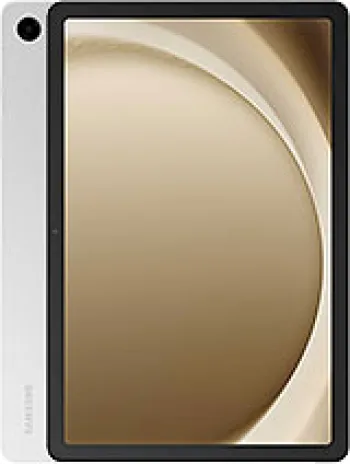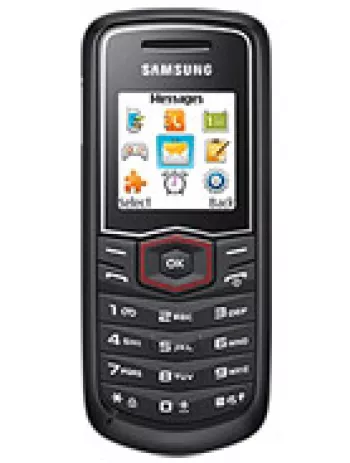
Design and Build
The Samsung G800, released in December 2007, represents a bygone era of mobile phones, where emphasis was placed on a compact design and robust functionality. The device sports dimensions of 101 x 51.1 x 18.8 mm and a weight of 134 grams, offering a solid and firm grip in the hand. Built with a focus on durability, the device features a titanium grey finish that exudes a sleek and professional appearance. With its mini-SIM compatibility, the Samsung G800 adhered to the mobile standards of its time, offering seamless network integration.
Display
The Samsung G800 features a 2.4-inch TFT display with 256K colors, offering a resolution of 240 x 320 pixels. Although modest by today's standards, the display was fairly standard in 2007, providing clear and vibrant visuals suitable for the device’s applications and functionality. The screen’s 34.6% screen-to-body ratio and pixel density of approximately 167 ppi contributed to its clarity and ease of use, making navigation through the phone’s menu a straightforward experience.
Hardware and Performance
Under the hood, the Samsung G800 included a feature phone operating system, supported by 160MB of internal storage. Storage could be expanded via a dedicated microSD slot, which was essential for users wishing to store more media files. While specific details about the RAM and processor are scarce, the phone performed adequately for the era’s standard applications and operations, catering to everyday communication needs.
Camera Capabilities
One of the distinguishing features of the Samsung G800 was its camera system. It was equipped with a 5 MP main camera, featuring autofocus and a notable 3x optical zoom capability. The inclusion of a Xenon flash ensured that photos taken in low-light conditions still maintained reasonable quality. Capable of recording videos at 320p@30fps, the Samsung G800 was positioned as a leader in mobile photography at the time. Additionally, a small, yet serviceable front-facing camera provided the option for selfies.
Network and Connectivity
The Samsung G800 supported GSM and HSPA network technologies, making it a versatile device for mobile communication. Operating on 2G bands (GSM 900/1800/1900) and 3G bands (HSDPA 2100), the device achieved speeds of HSPA 7.2/0.384 Mbps. Though it lacked WLAN capabilities, the inclusion of Bluetooth 2.0 with A2DP allowed users to pair with compatible devices for wireless data exchange. Additionally, a USB 2.0 port facilitated data transfer to and from computers, enhancing its connectivity.
Audio and Multimedia
For audio, the Samsung G800 boasted a loudspeaker and supported vibration alerts, MP3, and downloadable polyphonic ringtones. The absence of a 3.5mm audio jack was noted; however, the inclusion of stereo FM radio provided an alternative outlet for music enthusiasts. The audio quality was respectable, with tests showing noise levels at -86.7dB and crosstalk at -83.2dB, reflecting its ability to perform reasonably well for an all-in-one device.
Battery Life
The Samsung G800 was powered by a removable Li-Ion battery, promising a standby time of up to 220 hours and a talk time of up to 3 hours and 20 minutes. While not extensive by current smartphone benchmarks, the endurance was satisfactory for daily use, particularly considering the phone's comprehensive feature set.
Software and Features
Embedded with essential functionalities, the Samsung G800 supported SMS, MMS, and email services, facilitating versatile communication opportunities. Its browser offered WAP 2.0/xHTML, HTML, and an RSS reader for browsing the internet, providing users with access to online information and entertainment. Moreover, Java support (MIDP 2.0) enhanced the device’s capabilities by allowing the installation of additional applications and games.
Market Impact and Reception
Upon its release, the Samsung G800 was priced at approximately 180 EUR, targeting users who valued mobile photography alongside communication functions. Its pioneering camera features captured the attention of many, setting a standard for future mobile cameras. However, with the advent of more advanced smartphones, the Samsung G800 eventually faced discontinuation. Nonetheless, it remains a testament to Samsung's innovation in mobile technology during the mid-2000s.
Conclusion
The Samsung G800 is a classic representation of mobile innovation at the time of its release. Its combination of an advanced camera system, durable design, and robust feature set made it a significant player in the mobile phone market. Although the device has been discontinued, its influence is evident in the evolution of mobile technology, particularly in the domain of mobile photography. The Samsung G800 not only served as a reliable feature phone but also showcased the potential of integrating digital photography into mobile communication, a trend that has grown exponentially in the following years.
Key Features of Samsung G800
- Technology: GSM / HSPA
- 5 MP Main Camera with AF and 3x Optical Zoom, Xenon Flash
- 256K Colors TFT Display
- Expandable Memory: microSD Card Slot
- Bluetooth 2.0 with A2DP
- Stereo FM Radio
- Removable Li-Ion Battery
- Supports SMS, MMS, and Email Messaging
- WAP 2.0/xHTML, HTML, RSS Reader Browser
- Java MIDP 2.0 Support
Disadvantages of Samsung G800
- Lacks 3.5mm headphone jack.
- Display features low pixel density (~167 ppi).
- No WLAN (Wi-Fi) support.
- Limited internal memory of 160MB.
- Camera video resolution is low at 320p.
- Battery standby and talk times are relatively short.
- Device is discontinued and difficult to find in the market.
- Device uses older GSM/HSPA network technology.
- Mini-SIM format which is less commonly used today.
- Lacks GPS positioning feature.











View Also
More Phones
All Rights Reserved +14266 Phones © Mobilawy 2025

























